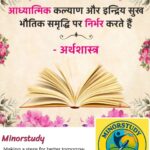Mahabharata Peace Festival: Celebrating Wisdom, Harmony, and Human Values
Introduction
In a world often fractured by conflict and division, the Mahabharata Peace Festival emerges as a luminous reminder of humanity’s eternal quest for peace, understanding, and righteousness. Drawing its inspiration from the legendary epic Mahabharata, this festival is not just a cultural event—it is a celebration of moral courage, self-reflection, and non-violence. It invites us to pause and consider the deeper message of the Mahabharata: peace is the highest Dharma.
- Introduction
- History of the Mahabharata Peace Festival
- Timeline
- Important Facts
- FAQs
- 1. What is the Mahabharata Peace Festival?
- 2. When is it observed?
- 3. Who organizes it?
- 4. How is it different from traditional Mahabharata recitations?
- 5. Can anyone participate?
- Significance in Culture and Society
- Daily Life Impacts
- Observance and Activities
- 1. Peace Dialogues
- 2. Bhagavad Gita Recitations
- 3. Creative Art and Essay Competitions
- 4. Lectures and Panel Talks
- 5. Cultural Performances
- Wishing on Mahabharata Peace Festival
- Important Points Recap
- Conclusion: Why Mahabharata Peace Festival Matters Today
This article delves deep into the history, timeline, facts, frequently asked questions, cultural observance, and the daily life impact of this powerful festival. Written in a warm, accessible tone for over 1200+ words, this guide is meant for every seeker of truth and harmony.
History of the Mahabharata Peace Festival
The Mahabharata Peace Festival has its roots in the philosophical essence of the Mahabharata itself, especially the episodes preceding the Kurukshetra war. It was in this phase that Lord Krishna made his noble efforts to avoid bloodshed and negotiate peace between the Kauravas and Pandavas. These peace missions, though unsuccessful in averting war, hold timeless value in showcasing how efforts toward non-violence are worth celebrating and emulating.
In modern times, cultural organizations, peace foundations, and educational institutions in India and abroad have started organizing the Mahabharata Peace Festival to revive the message of dharma, dialogue, and empathy through literature, performance, and community engagement.
Timeline
- Circa 3000 BCE: Estimated era of the Kurukshetra war as per traditional sources.
- 5th Century BCE to 1st Century CE: Mahabharata compilation and literary growth.
- 20th Century: Indian thinkers and freedom fighters like Mahatma Gandhi emphasize the Bhagavad Gita and Krishna’s peace efforts.
- Early 2000s: Emergence of localized Mahabharata-themed peace events in academic and cultural institutions.
- 2010-Present: The Mahabharata Peace Festival gains structured recognition in India and among diaspora communities.
Important Facts
- Inspired by Krishna’s Peace Mission: The festival centers on Krishna’s role as a peacemaker.
- Multi-disciplinary Celebration: Includes storytelling, art, drama, debates, and readings from the Gita.
- Promotes Non-violence: Aligns with principles of Ahimsa and compassion.
- Held Globally: Celebrated in schools, spiritual centers, and cultural academies.
- Linked to Gita Jayanti: Often coincides with events commemorating the Bhagavad Gita.
FAQs
1. What is the Mahabharata Peace Festival?
It is a cultural and philosophical festival inspired by Krishna’s peace efforts in the Mahabharata, celebrating the values of peace, justice, and dharma.
2. When is it observed?
There is no fixed date, but many organizations celebrate it around Gita Jayanti or during peace and harmony weeks.
3. Who organizes it?
Cultural foundations, schools, spiritual organizations, literary societies, and social peace groups.
4. How is it different from traditional Mahabharata recitations?
While traditional recitations focus on the war or moral teachings, the Peace Festival highlights Krishna’s diplomacy and dialogue—lesser-discussed yet deeply significant.
5. Can anyone participate?
Yes, it is inclusive and open to all age groups, nationalities, and faiths.
Significance in Culture and Society
The Mahabharata Peace Festival goes beyond mere celebration—it invites introspection. In a society plagued with strife, the story of Krishna’s attempt to avert war becomes a moral compass. Here’s why it holds enduring relevance:
1. Symbol of Non-Violent Dialogue
In an age where confrontations escalate quickly, the festival encourages peaceful negotiation, reminding us that dialogue is a potent tool for conflict resolution.
2. Spiritual Reflection
Krishna’s peace mission wasn’t just political—it was deeply spiritual. The festival allows communities to reflect on Karma Yoga, Bhakti, and Sattva guna (qualities of purity and balance).
3. Youth Empowerment
Workshops and storytelling sessions instill ethical thinking in youth. It urges them to become messengers of peace in their families and societies.
4. Universal Relevance
Though rooted in Indian tradition, the Mahabharata’s lessons of inner conflict, duty, and righteousness are universally applicable.
Daily Life Impacts
- Promotes Emotional Intelligence: Understanding characters like Yudhishthira, Arjuna, and Krishna fosters empathy.
- Improves Conflict Resolution Skills: Through mock peace dialogues and readings.
- Boosts Cultural Awareness: Keeps ancient wisdom alive in a modern format.
- Reduces Stress: Participating in chanting or storytelling can be meditative.
- Builds Community Bonds: Brings people together for a common cause.
Observance and Activities
1. Peace Dialogues
Dramatic reenactments of Krishna’s peace mission, followed by group discussions.
2. Bhagavad Gita Recitations
Sections where Krishna counsels Arjuna are chanted to understand the balance between action and surrender.
3. Creative Art and Essay Competitions
Young participants explore peace through their creativity.
4. Lectures and Panel Talks
By scholars and spiritual teachers on the importance of peace and dharma.
5. Cultural Performances
Dance dramas, skits, and musical renditions depicting the Mahabharata’s central values.
Wishing on Mahabharata Peace Festival
Let us wish each other:
“May the message of Krishna’s peace efforts light the path of harmony in our hearts. On this Mahabharata Peace Festival, may your life be filled with thoughtful action, gentle strength, and the courage to walk the path of righteousness.”
Important Points Recap
- Krishna as the symbol of diplomacy and peace.
- Encourages peaceful resolution of conflicts.
- Inclusive and open to global communities.
- Bridges ancient wisdom with modern societal needs.
- Emphasizes dialogue over destruction.
Conclusion: Why Mahabharata Peace Festival Matters Today
Mahabharata Peace Festival: We often remember the Mahabharata for its great war. But before the war, there was a greater effort for peace—a divine mission to prevent destruction. That mission was noble, profound, and sadly, declined. The Mahabharata Peace Festival revives that forgotten heroism of non-violence and dialogue.
In our homes, offices, and nations, the lesson remains the same: talk before you fight, listen before you speak, and always choose dharma over ego. Celebrating this festival reminds us that peace is not passive—it is the bravest stand we can take.
Let this celebration not end in a day but become a living principle of our daily actions.
“To seek peace like Krishna did, is to become the true warrior of today.”








